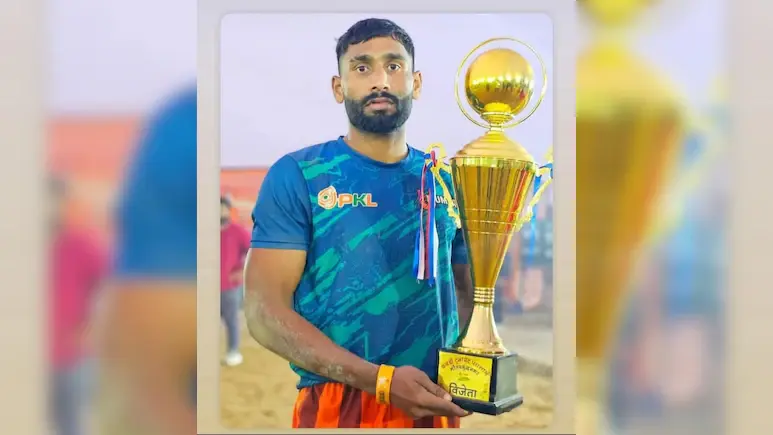
The tragic death of 22-year-old Kabaddi player Brijesh Solanki from rabies after a puppy bite
A Rising Star Silenced: The Life and Loss of Brijesh Solanki
Brijesh Solanki, just 22, was more than a state-level Kabaddi champion, he was a symbol of grit, discipline, and rural sporting excellence. Hailing from Farana village in Bulandshahr, Uttar Pradesh, Brijesh had already clinched a gold medal in state championships and was training hard for a shot at the Pro Kabaddi League.
But in April 2025, a seemingly minor incident changed everything. While rescuing a stray puppy from a drain, Brijesh was bitten. He dismissed the injury as trivial, a common mistake among athletes accustomed to bruises and scrapes. He neither sought medical attention nor received the post-exposure prophylaxis (PEP) that could have saved his life.
Weeks later, Brijesh began experiencing numbness and fatigue during practice. By June 26, his condition had deteriorated rapidly. He showed classic signs of rabies, hydrophobia, confusion, and severe agitation. Despite being rushed to multiple hospitals in Khurja, Aligarh, and Delhi, he was denied treatment until finally admitted to a private facility in Noida. It was too late. Brijesh died on June 28, en route to a faith healer in Mathura.
His final days were captured in heartbreaking videos showing him writhing in pain, an agonizing reminder of a disease that is 100% fatal but also 100% preventable.
A Preventable Tragedy: What Brijesh’s Death Reveals About India’s Rabies Crisis
India accounts for over 35% of global rabies deaths, with an estimated 20,000 fatalities annually, according to WHO. Yet, rabies remains one of the most neglected public health issues in the country. Brijesh’s case is a stark example of how lack of awareness, delayed treatment, and systemic gaps can turn a survivable incident into a fatal one.
Several red flags emerged in Brijesh’s case:
- Lack of awareness: He mistook the bite for a sports injury and didn’t know the urgency of PEP.
- Healthcare denial: His family alleges he was turned away from multiple government hospitals.
- Delayed diagnosis: Rabies symptoms appeared only in the final days, by which time the virus had reached his brain.
His coach, Praveen Kumar, said, “He thought it was just a scratch. He never imagined a puppy bite could kill him.”
The tragedy has prompted the Bulandshahr health department to vaccinate 29 villagers and launch a local awareness campaign. But experts argue that piecemeal efforts are not enough. India needs a centralized, well-funded rabies control program that includes:
- Mass awareness drives in schools, sports academies, and rural areas
- Free and accessible PEP kits at all primary health centers
- Stray animal vaccination and sterilization programs
- Training for frontline health workers to recognize and treat rabies exposure
A Call to Action: Turning Grief Into Reform
Brijesh’s death has sparked a wave of public grief and anger. Social media is flooded with tributes, and health activists are demanding that his story be a turning point in India’s fight against rabies.
The tragedy has also reignited calls for a National Rabies Elimination Mission, modeled on successful campaigns like polio eradication. Such a mission would require:
- Inter-ministerial coordination between health, animal welfare, and education departments
- Public-private partnerships to fund vaccine production and distribution
- Community engagement to report and manage stray animal populations
- Digital tracking systems for bite cases and vaccine coverage
India has the tools it manufactures high-quality rabies vaccines and has a vast network of health workers. What’s missing is urgency, coordination, and political will.
Stay updated with the latest news on Rapido Updates. Keep yourself updated with The World, India News, Entertainment, Market, Automobile, Gadgets, Sports, and many more
‘Heads of State’ Explodes Onto Prime Video with Star Power and Satirical Swagger
Param Sundari Sparks Wedding Wonderland: A Dazzling Delight of Love, Drama & Desi Glam